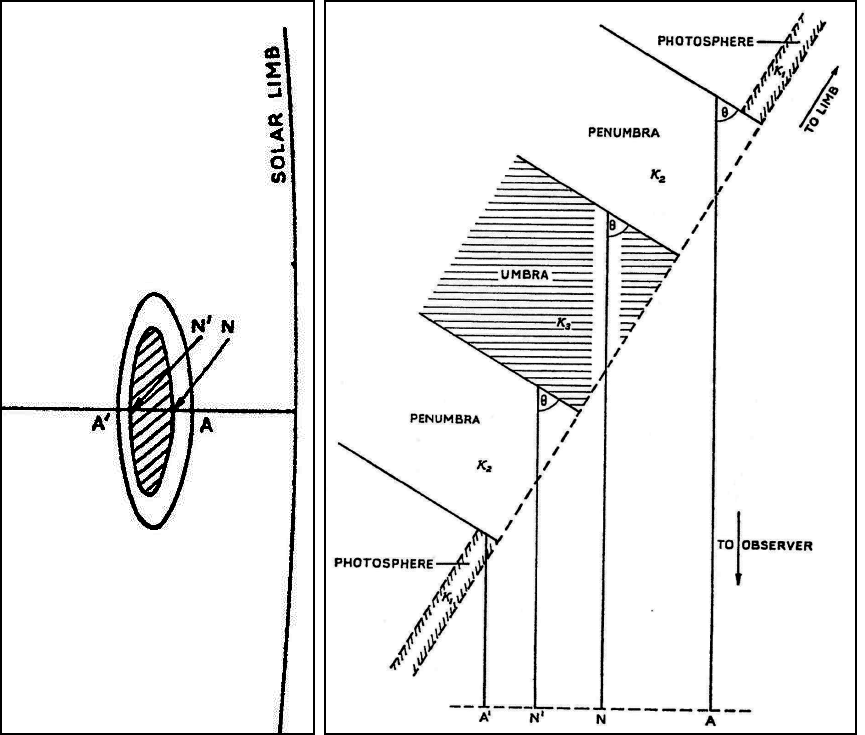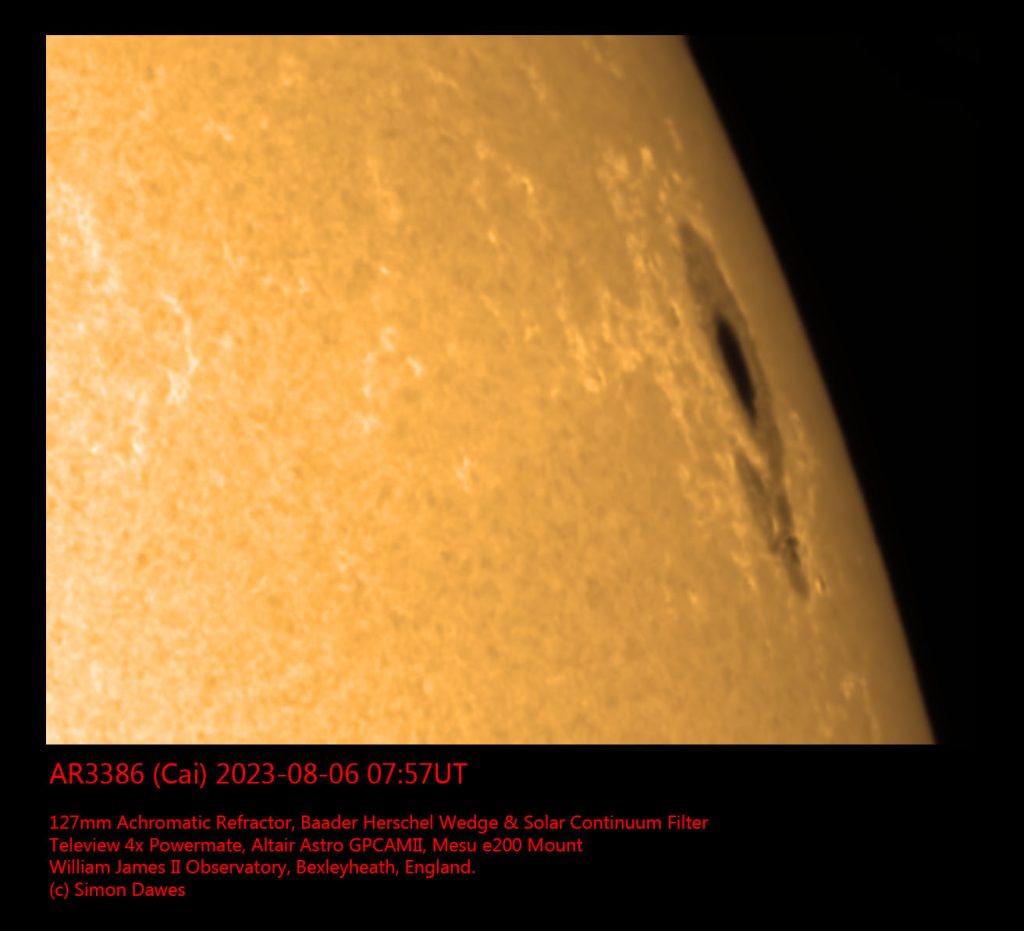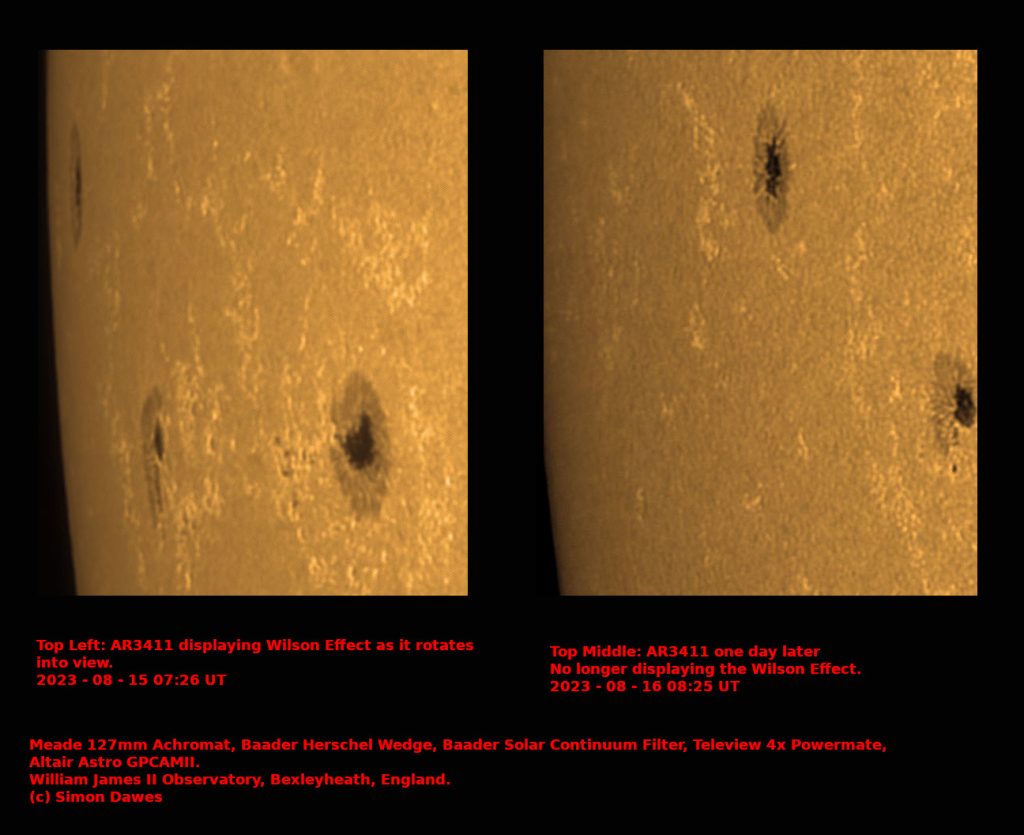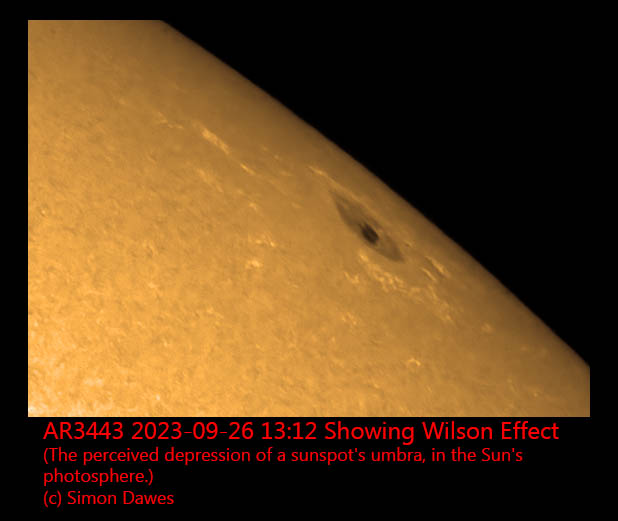Wilson Effect Observer’s Challenge
Introduction

As sunspots progress towards the limb their appearance becomes foreshortened. However, for some sunspots, the width of the penumbra furthest from the limb becomes narrower than the penumbra nearest to the limb. This phenomenon was discovered by the Scottish astronomer Alexander Wilson in 1769 when observing the changing appearance of a large sunspot as it progressed towards the limb. It is referred to as the Wilson Effect.
This phenomenon was thought to be due differing depth below the level of the photosphere from the outer edge of the penumbra to the centre of the umbra in the middle of the sunspot (i.e. the sunspot formed a depression below the photosphere). However, the Wilson Effect is due to the different absorption properties of the photosphere, penumbra and umbra. The absorption is greater in the photosphere, less in the penumbra and even less in the umbra due to their physical properties such as temperature and magnetic field strength. Thus, the umbra is more transparent than the penumbra and the penumbra is less transparent than the photosphere. This accounts for the appearance of sunspots showing the Wilson Effect as shown right.
The Challenge
This challenge, suggested by Roger Samworth, is to:
- Observe and record sunspots showing the Wilson Effect either rotating onto or off the disk. The best type of sunspots to show the Wilson Effect are symmetric sunspots such as of type J or H or the symmetrically shaped leader or followers of bipolar groups.
- The recording can either be drawings or by imaging. Near simultaneous multi-wavelength observations would also be useful.
- Monitoring the changing appearance of sunspots showing the Wilson Effect as they move away or towards the limb.
- Observe sunspots when very close to the limb (to show that there is no dip when the umbra is on the limb).
Examples of the sunspots showing the Wilson Effect are shown below (most recent at the bottom of the page):



| The British Astronomical Association supports amateur astronomers around the UK and the rest of the world. Find out more about the BAA or join us. |
